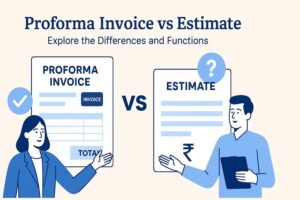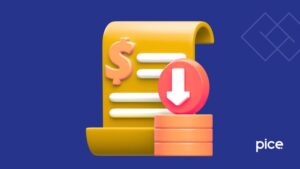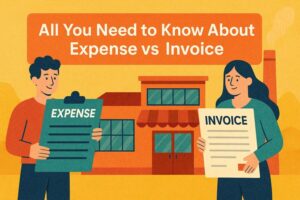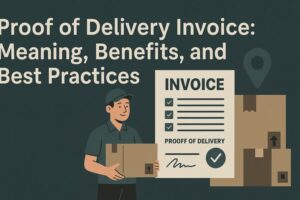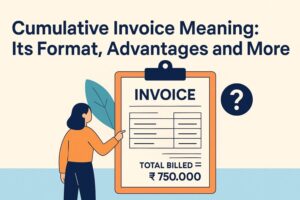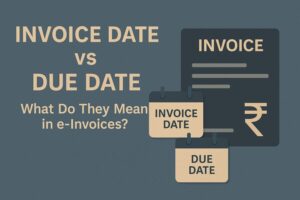Estimate vs Invoice: What Are the Major Differences?
- 5 Nov 25
- 7 mins

Estimate vs Invoice: What Are the Major Differences?
Key Takeaways
- Estimates and invoices serve different purposes. An estimate predicts costs before a project begins, while an invoice requests payment after completion or delivery.
- Estimates help set client expectations by outlining probable expenses and project details, ensuring transparency and trust before work starts.
- Invoices are legally binding and act as formal payment requests containing the final amount, due dates, and applicable taxes.
- There are various types of estimates and invoices suited to different industries, such as preliminary, detailed, and quantity estimates, and standard, proforma, or recurring invoices.
- Accurate and timely documentation strengthens cash flow, reduces payment delays, and ensures smoother business operations, especially for MSMEs.
In a business, it is a routine activity to turn estimates into invoices. When properly done, it guarantees cash flow. Any slip up, however, can cause severe payment delays.
Incidentally, during the third quarter of the previous financial year, the MSME Samadhaan portal indicated that a shocking ₹ 26,876 crores worth of small and medium enterprises were in limbo as a result of delayed invoicing.
The words estimate and invoice might be tricky to explain to you provided you are a beginner in the field of business compliance. In this blog we shall mainly emphasize on the distinctions between estimate vs invoice and we will also cover the different types of estimate vs invoice.
What is an Estimate?
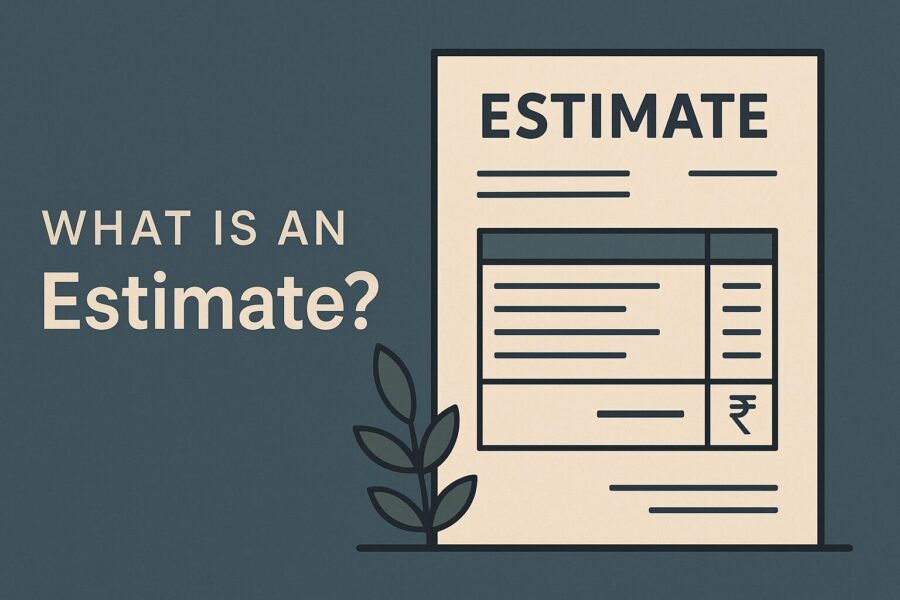
An estimate is an official document that businesses provide to their prospective customers. It roughly outlines the resources and costs required for delivering a project or service. For customers, receiving the estimate helps set clear expectations and offers a financial overview, enabling them to make well-informed decisions.
Well-defined estimates significantly help companies stabilise their payment cycles. As more organisations are issuing estimates, the digital invoicing market is anticipated to grow by 22.4% between 2024 and 2031. To make the most of this opportunity, you must learn which types of estimates can help you build trust and transparency with clients.
What are the Different Types of Estimates?
Based on the sector in which you are functioning, your business operations may revolve around the following types of estimates:
1. Preliminary Estimate
A preliminary estimate is a rough overview intended to provide an idea of the costs involved in completing a project. These documents help to outline the overall budget. They are prepared at a very early stage, based on limited information available from previous similar projects.
2. Detailed Estimate
When some additional information is available regarding a project, you can convert a preliminary estimate into an exact or detailed estimate. It usually includes in-depth project specifications, cost calculations of individual supplies, execution plans, etc.
3. Quantity Estimate
Typically utilised in the construction sector, a quantity estimate provides full quantitative information on the materials required to complete a given task.
Suppose a contractor is hired to tile the floor of an office and the charge is ₹8 per square foot. To find the total expense, he will multiply the area to be tiled by the rate per square foot.
So, if the office floor covers 3,200 square feet, the total cost will be:
3,200 square feet × ₹8 per square foot = ₹25,600.
Format and Content of an Estimate
Generally, business estimates comprise the following details:
- Estimate number
- Estimate issuance date
- Customer information
- Brief details about the proposed services or products
- Rough costs of each item or service
- Estimate terms and conditions
- Validity of the estimate
As estimates are not legally binding documents, businesses have considerable flexibility in deciding their format. However, it is advisable to use professional GST-compliant software to ensure accuracy and timeliness in their issuance.
What is an Invoice?
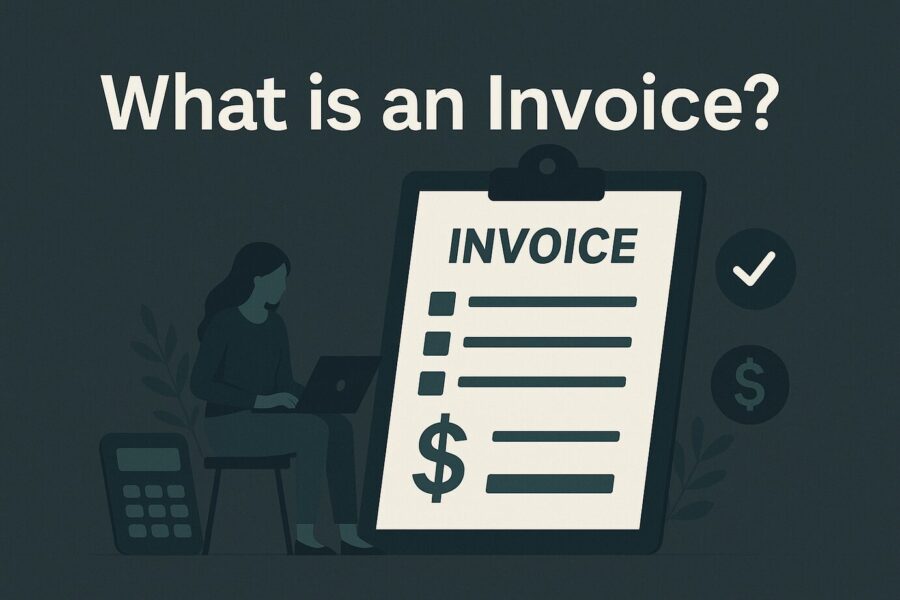
Before we dive into the difference between estimate vs invoice, let us quickly understand what an invoice is and its different types.
An invoice serves as a payment request statement sent to the client after goods or services have been delivered. It includes details related to the services or products supplied, the preferred method of payment, the agreed price and other important information.
A finding suggests that e-invoicing could potentially save ₹1.09 crore annually for Indian businesses. Thus, the professional generation of invoices now seems compulsory for any business as soon as their items are ready for pickup or shipping. These documents confirm whether there are any deviations from the final estimate and whether the individual costs are accurately represented.
What are the Different Types of Invoices?
Invoices come in different formats, each tailored to meet specific business needs. The various types include:
1. Standard Invoice: This invoice type is the most common, detailing the products or services delivered and the payment due.
2. Proforma Invoice: They serve as a preliminary bill before the final delivery of supplies.
3. Recurring Invoice: These documents are suitable for ongoing services like monthly maintenance.
4. Timesheet Invoice: If you are billing for hourly work, like consulting or freelance gigs, you would probably use timesheet invoices.
Besides these basic formats, a credit invoice or a credit note can help adjust or issue refunds of a previous invoice. On the other hand, debit invoices are used to increase the amount due. Finally, for international trade, commercial invoices are crucial as they detail goods for customs clearance.
Format and Content of an Invoice
An invoice is more than just an ordinary bill. It is a complete summary of your transaction. To know the difference, take a look at the official content of an invoice:
- Invoice number
- Invoice date
- Payment due date
- Seller's information
- Detailed description of the goods and services
- Total amount payable
- Applicable taxes, discounts or any additional fees
- Terms and conditions associated with the payment method
💡If you want to streamline your payment and make GST payments via credit, debit card or UPI, consider using the PICE App. Explore the PICE App today and take your business to new heights.
Estimate vs Invoice: Key Differences
In the context of business transactions, an estimate comes first followed by an invoice. While this is one of the most common distinctions, here are some notable differences between estimate vs invoice you need to know:
| Factor | Estimate | Invoice |
| Purpose of Issuance | Predicts costs and sets client expectations | Demands payment for goods/services delivered |
| Timing | Issued before work begins | Sent after the delivery of goods/services |
| Legal Implications | Not legally binding | Acts as a legally binding payment document |
| Document Contents | Displays the rough number of deliverables, rates, terms and validity | Shows all the final details, quantities, prices and payment terms |
| Customer Commitment | Customer is not obligated to pay | Confirms customer’s obligation to pay |
| Modifiability | Can be altered or updated before acceptance | Cannot change once issued |
These distinctions bring to light the different niche roles estimates and invoices have within the business transaction process. Efficient usage of all documents can guarantee the effective implementation of the communication process and adequate cash flow due to the setting of expectations initially and the timely receipt of payments.
Conclusion
Estimate vs invoice is another concept that assists in creating better compliance, building trust among customers and securing good business cash flow. Scheduling the left time with each document results in easier business processes and more adequate adherence to rules.
In case you require additional information on how to select the most appropriate invoicing software or simply want to learn in more detail how to transform estimates to invoices, you might want to contact GST experts online.







